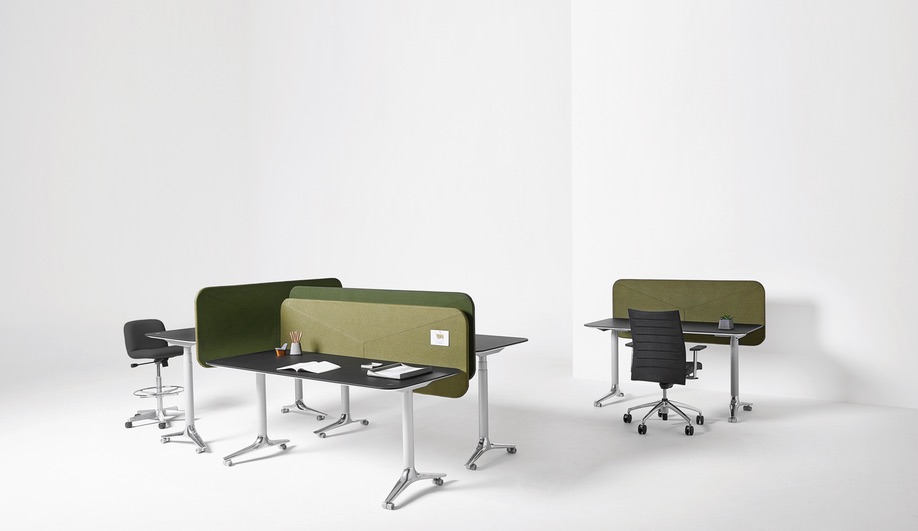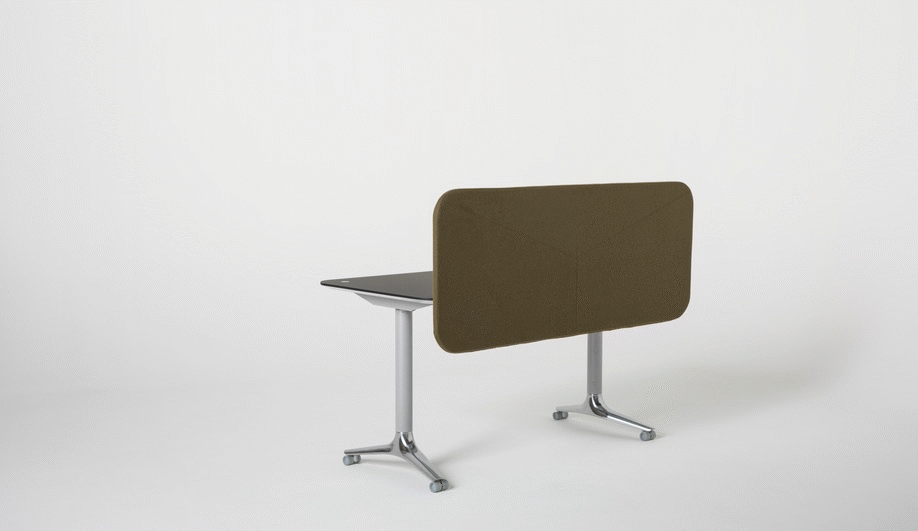
If the modern workplace can be defined by a single concept, it’s flexibility. That’s because the nature of work – across all industries – is changing: the chained-to-a-desk job has given way to mobility, with nine out of 10 millennials wishing to work remotely. Technology has enabled enterprise-level work to be done on myriad devices. And workplace wellness has become a major trend as the Sitting Disease – which costs America $635 million annually – has become prevalent. Workers refuse to sit still, and that’s a good thing.
Though design is the cause of the workplace’s problems – Robert Propst, who developed the cubicle, is frequently cited as the architect of the current office – it can be used to solve them, too. And Nienkämper‘s Gateway Height Adjustable Table, a simple yet game-changing intervention designed by Danish design studio Busk+Hertzog, is a solution built for maximum flexibility.

“Work groups are constantly created across organizations, and many employees are present only part-time in the physical office,” says Busk+Hertzog co-founder Stephan Hertzog. “In order to optimize the use of facilities, and to make it possible to quickly to adjust to fast-changing organizations, we believe it is necessary to have furniture that can support this.”
As a response, Hertzog designed the Gateway Height Adjustable Table, which won a Best of Neocon Award in June. From afar, it’s handsomely minimalist – true to Busk+Hertzog’s sensibilities – with a wood-veneer or laminate top paired with optional acoustic panels. But it is built to be fully mobile: its legs feature glides or low-profile locking casters, which can be rolled to open areas, breakout rooms or wherever work happens. At the push of a button, the table smoothly converts from a seated station into a standing desk.

The workstation’s mechanical function, one might assume, requires it to be plugged in. Not so for the Gateway Height Adjustable Table: it is powered by a rechargeable battery concealed on the table’s underside, which also houses a hub connecting multiple devices. Without being tethered by cables, it can be moved, swiveled and raised freely. “The rechargeable battery provides the flexibility of allowing the tables to be used in area regardless if there is a power source nearby,” says Klaus Nienkämper, founder of Nienkämper.
Hertzog agrees – and cites the battery as the table’s essential feature. “The key idea behind the Gateway series has been, from the very beginning, to be technology-independent and thereby being extremely flexible and customizable,” he says. “The new height-adjustable table follows along the same lines. Depending the number of times the table is being elevated or lowered each day, a battery charge can last for many weeks.”
The customizability and mobility of the desk, Hertzog notes, lets designers create reconfigurable office layouts. Administrative areas, collaborative spaces, private areas and lounges are still necessary, but with flexible furniture, they can be created on an ad-hoc basis. With multiple sizes and colourways, these tables are also suitable for a range of corporate identities.

Due to its adjustability, it also allows users to shift positions daily, tackling the dreaded Sitting Disease. “Health-wise it is very beneficial for everyone working in an office to change work positions, from sitting to standing, at least three to four times a day not only to minimize back problems but also to improve blood circulation and the general well being,” adds Hertzog.
So, we put the question to Nienkämper: how have these tables functioned in real-world usage? “We have received tremendous response from the design community,” he says. “The product is being specified for open office, multi-functional work environments. Not being tied to a power source is a key advantage.”
He’s right. In the contemporary office, not being tied to anything is a key advantage.
This content was published by Azure on behalf of Nienkämper.
